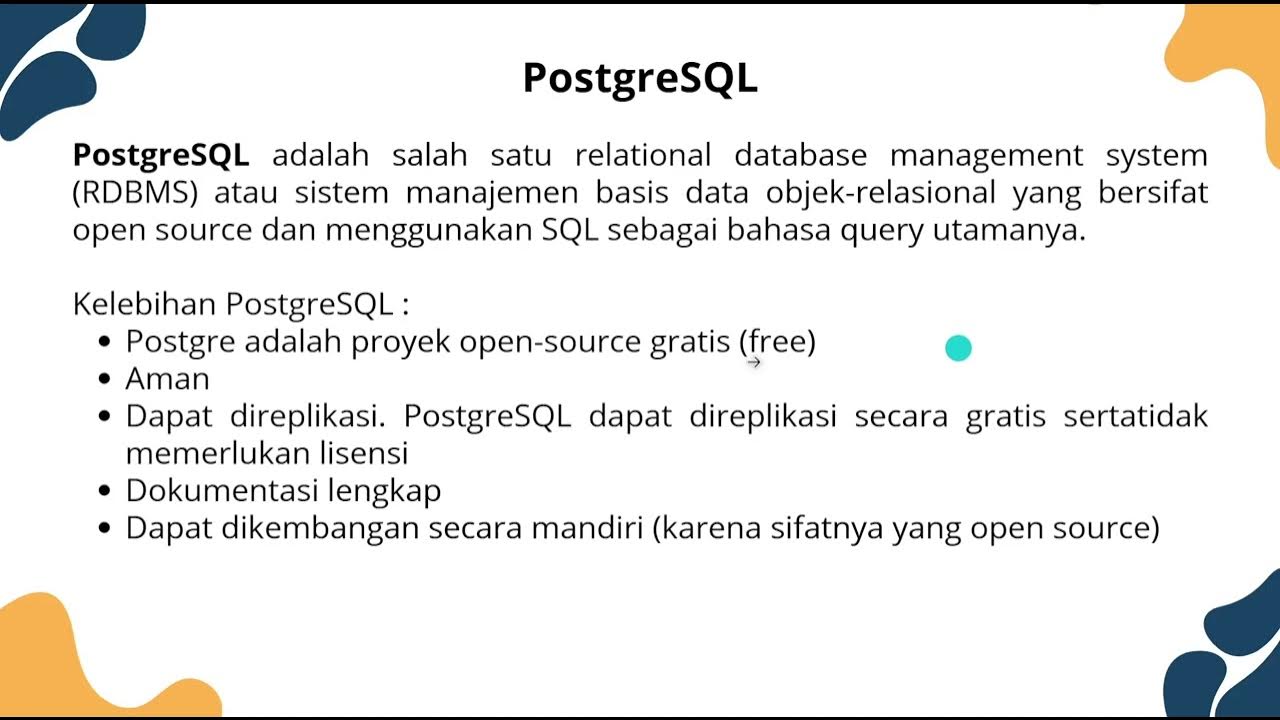Lec-4: 2 tier and 3 tier Architecture with real life examples | Database Management System
Summary
TLDRIn this video, the presenter explains the differences between 2-tier and 3-tier architecture in Database Management Systems (DBMS). The 2-tier architecture is described as a simple client-server model, suitable for limited users but lacking scalability and security. In contrast, the 3-tier architecture introduces a middle business layer, enhancing scalability and security by preventing direct access to the database. Using real-life examples like IRCTC and banks, the video highlights the practical applications and advantages of each architecture, emphasizing the growing importance of 3-tier systems for modern web applications.
Takeaways
- 😀 2-tier architecture consists of two layers: the client layer and the database server layer.
- 😀 In 2-tier architecture, the client machine directly interacts with the database server using an API, like JDBC-ODBC.
- 😀 2-tier architecture is ideal for small-scale systems with limited clients and database access.
- 😀 Common real-life examples of 2-tier architecture include railway ticket reservations and bank transactions.
- 😀 The main advantage of 2-tier architecture is its simplicity and ease of maintenance due to limited clients.
- 😀 2-tier architecture faces challenges with scalability and security when there are many users or data access points.
- 😀 3-tier architecture adds an intermediate layer, the business layer, between the client and the database server.
- 😀 The business layer in 3-tier architecture processes queries and acts as an intermediary to reduce the load on the database server.
- 😀 3-tier architecture offers better scalability, as it can handle a larger number of users without overloading the database server.
- 😀 3-tier architecture improves security by ensuring the database is not directly exposed to clients; all interactions pass through the business layer.
- 😀 Real-life examples of 3-tier architecture include web applications like Gmail and banking apps, where users interact with a client interface, which connects through the business layer to retrieve data.
Q & A
What is the main difference between 2-tier and 3-tier architecture in DBMS?
-The main difference lies in the number of layers involved. 2-tier architecture has two layers: the client layer and the database server. 3-tier architecture adds an intermediate business layer between the client and the database server, improving scalability and security.
What are the advantages of 2-tier architecture?
-The advantages of 2-tier architecture include simplicity, easy maintenance due to limited clients, and it being ideal for small systems with controlled access.
What are the key disadvantages of 2-tier architecture?
-The disadvantages include limited scalability, as it struggles with a large number of users, and security risks due to direct interaction between clients and the database server.
Why is 3-tier architecture considered more secure than 2-tier?
-In 3-tier architecture, the client never interacts directly with the database server. Instead, the business layer acts as an intermediary, which protects the database from direct exposure and reduces vulnerabilities.
What role does the business layer play in 3-tier architecture?
-The business layer processes queries from the client, acting as an intermediary between the client and the database. It reduces the load on the database server and helps manage scalability and security.
Can you give real-life examples where 2-tier architecture is used?
-Real-life examples of 2-tier architecture include systems like Indian Railways (IRCTC) and banking applications, where clients interact with a local machine to access data from a server.
How does 3-tier architecture help with scalability?
-In 3-tier architecture, the business layer handles all client queries, allowing the database server to remain less burdened. This enables the system to scale and handle a large number of users without performance issues.
What is the advantage of using 3-tier architecture in modern web applications?
-3-tier architecture provides better scalability and security for modern web applications, allowing them to handle a large number of users, protect user data, and manage complex systems efficiently.
What problem does the database server face in a 2-tier system with many users?
-In a 2-tier system, when the number of users increases, the database server can become overloaded. It has to handle both processing the queries and retrieving data, leading to performance bottlenecks.
Why is maintenance easier in 2-tier architecture compared to 3-tier architecture?
-Maintenance is easier in 2-tier architecture because there are fewer layers involved, and the system is simpler. With 3-tier architecture, the introduction of multiple layers increases system complexity and makes maintenance more challenging.
Outlines

This section is available to paid users only. Please upgrade to access this part.
Upgrade NowMindmap

This section is available to paid users only. Please upgrade to access this part.
Upgrade NowKeywords

This section is available to paid users only. Please upgrade to access this part.
Upgrade NowHighlights

This section is available to paid users only. Please upgrade to access this part.
Upgrade NowTranscripts

This section is available to paid users only. Please upgrade to access this part.
Upgrade NowBrowse More Related Video

Memahami Tier Pada Data Center | Upskilling With SUHU

database system architecture in dbms | database management system | Architecture | DBMS | btech

CH01_VID02_Database systems Main components

SBD1 Pertemuan 1 | 3IA09,3IA10,3IA11,3IA13,3IA16

Introduction to Database Management Systems

Lec-2: Introduction to DBMS (Database Management System) With Real life examples | What is DBMS
5.0 / 5 (0 votes)